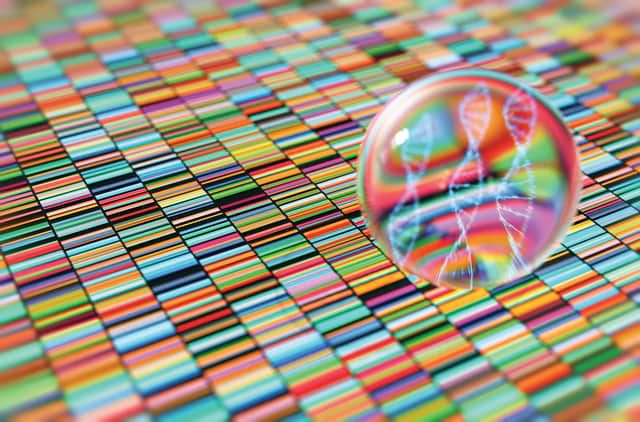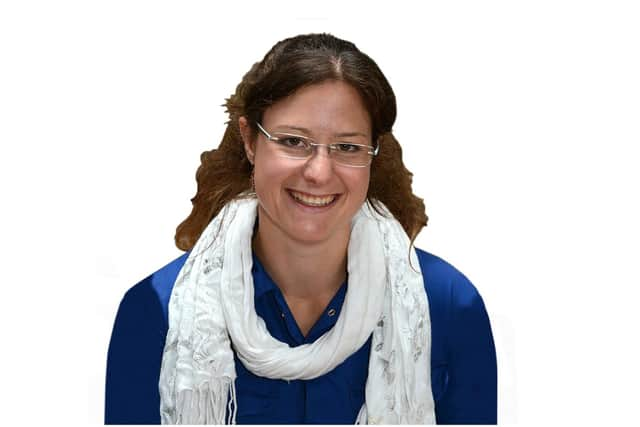How experts have deployed data to tackle Covid-19 and plan for future pandemics


“It involves understanding human behaviour, addressing inequalities, optimising our communications. It brings in public health and how that interacts with animal health, and then there is the economics lurking behind that. In parallel, there is a whole gamut of aspects to do with education.”
Whitelaw says that Scotland, and specifically the University of Edinburgh, is ideally positioned to take advantage of the One Health agenda because of its expertise in human and animal health – and in data.
Advertisement
Hide AdAdvertisement
Hide AdHe adds: “Edinburgh has a joint medical and vet medical college, a leading science and engineering college and the wonderful humanities, arts and social sciences in the third college. It is not individually that we can address One Health, it is by bringing all these together, by intertwining roles and ideas, that we will achieve success, or do One Health data better.”


But how has the One Health approach of collaboration and data sharing between scientists, health practitioners and the wider academic community helped shape our efforts to understand and tackle the coronavirus pandemic? And, building on the achievements already made, how better prepared are we for another global virus outbreak?
TRANSMISSION OF A VIRUS
Dr Sam Lycett, a genetics expert at the University of Edinburgh, uses phylodynamics to study the spread of viruses. She says: “This technique makes use of the now large collections of virus genome sequence data and the fact that these viruses accumulate mutations over time.”
She uses this information to look at who infected whom either at an individual level or group level, such as a city or region. “Going deeper than this we can also estimate predictive factors for why we see the transmission patterns. Is it just distance, known host movement patterns or a change in environmental conditions?”
During the coronavirus pandemic, the amount of available data has been huge, Lycett says. “In this current pandemic, there has been a massive global and UK-specific Sars-CoV-2 sequencing effort for people – there are almost four million genomes now, with almost one million just in the UK and close to 100,000 just for Scotland.
“This is a really good surveillance sample – roughly, we are sequencing one in five or six positive cases. We use this sequence data to calculate how individual lineages and mutations are being generated, imported, and growing and declining, in Scotland.”
TREATMENT
Dr Kenny Baillie, a senior clinical research fellow at the Roslin Institute, says viral sequence data is now converging with clinical and biological data from humans and being used to find treatments for Covid-19.
The Roslin Institute is leading “the most powerful study of human genetics of Covid – more powerful in terms of discovery power than all of the other genetics studies in the world put together”, says Baillie. “Most recently, we have reported25 genetic associations with critical illness in Covid, many of which lead us to promising therapeutic avenues.”
Advertisement
Hide AdAdvertisement
Hide AdDiscoveries reported after only five months of Covid being in the UK included two genes “which have led directly to treatments being included in large-scale clinical trials”.
In the future, Baillie wants to be able to look at treatments even more quickly than the five months which was achieved in the pandemic. “We can move towards doing this in real time… there is a convergence between animal and human science which means the same statistical techniques are used for both livestock and human genetics. With computing power and the human resource that is being deployed, we can move towards close to real-time host and viral genetic studies.”
ZOONOSIS
The study of zoonotic pathogens – those that can move from animal to a human – is at the heart of discovering the way coronavirus spreads, both locally and globally.
Virologist Christine Tait-Burkard, a research fellow at the Roslin Institute, has been working on coronaviruses for more than 12 years. She says: “Coronaviruses have an inherent potential for cross-species transmission as one of the properties they have is that they can swap large parts of their genome relatively easily, and that is a bit reminiscent of the most known zoonotic virus, the influenza virus.”
International data accumulation and sharing has helped build understanding of coronavirus. Tait-Burkard says this includes looking at treatments for other diseases, such as cardiac conditions and cancer, which can help develop help with coronavirus – “we can harness that and also tackle coronavirus”.
And she says the drugs needed should be taken as early as possible, not when a patient has had to be hospitalised. “We really need a pill that people can take at home when they get the first symptoms.”
Tait-Burkard’s work with international colleagues includes “looking at the livestock, the wildlife and the human coronaviruses and finding the commonalities, taking all the data together… so that we can get drugs that are there for any future pandemic.”
THE SLOW PANDEMIC
“We need to leverage lessons from Covid,” says Professor Ross Fitzgerald, personal chair of molecular bacteriology at the University of Edinburgh. His work focuses on antimicrobial resistance (AMR), described as a “slow pandemic” and a huge public health threat, with estimates suggesting hundreds of thousands of deaths occur worldwide due to infections caused by resistant bacteria. “This is a major health crisis that has taken a back seat since the pandemic,” he says, warning that effective antibiotics could run out.
Advertisement
Hide AdAdvertisement
Hide AdA lot of the work to find a solution to AMR surrounds data, says Fitzgerald – faster diagnostics, more sequence information and real time surveillance of humans, animals and the environment on a global scale.
And he adds that the work on coronavirus can now help tackle AMR. “We need to unite academia, industry, government and policy-makers so we are all working together, communicating the data effectively to address the impact of AMR.”
Fitzgerald is concerned there is not “sufficient volume of data” to address AMR at the moment. “We need more data, but to get the value from it we need to have really good descriptive information… it is high-quality data that we need.”
And he is a strong advocate of developing artificial intelligence and machine learning to harness that data. “We know that it will allow us to track the emergence and spread of resistance and pathogens.”
THE FUTURE
Professor Lisa Boden, chair of population medicine and veterinary public health policy at the University of Edinburgh, says that from a One Health perspective, there have been issues surrounding the way coronavirus has been dealt with.
She says: “Covid-19 has really made visible different types of vulnerabilities in our institutions, our governance and our legal structures, and those are really due to entrenched health, social, racial, political and economic inequalities at different scales, at a local and international level.”
Boden says there has been “a lack of complete data” particular for “people living on the edges of society and those people who are living in communities which might be remote, rural and geographically isolated”.
To change this, she advocates a non-linear approach which looks at both the causes of inequality as well as at a disease itself, using multi-sectoral datasets.
Advertisement
Hide AdAdvertisement
Hide AdBut with the experience of a vast amount of data collection, use and sharing surrounding the pandemic, some believe future outbreaks could look a lot different.
Lycett says: “We will be able to predict and quantify the risk of having a pandemic. Whether we will be able to predict the exact time and place of the event itself is very variable. But certainly to predict risky areas and risky situations, it is possible.”
Tait-Burkard agrees, saying: “It is probably not all that easy to predict when the transmission is going to happen… but what we can learn from this pandemic is to be better prepared. And we now have the facilities in place to do that preparedness, we will have to make sure there is money available to maintain these facilities.”
This article first appeared in The Scotsman’s Life Sciences 2021 supplement. A digital version can be found here.